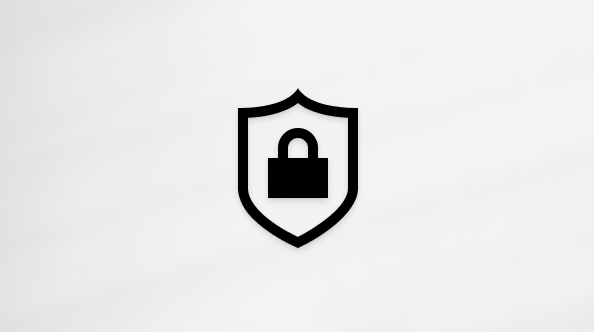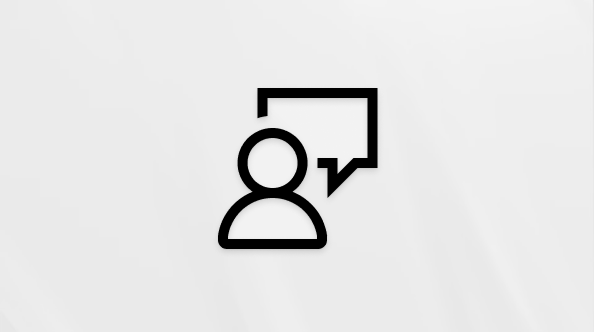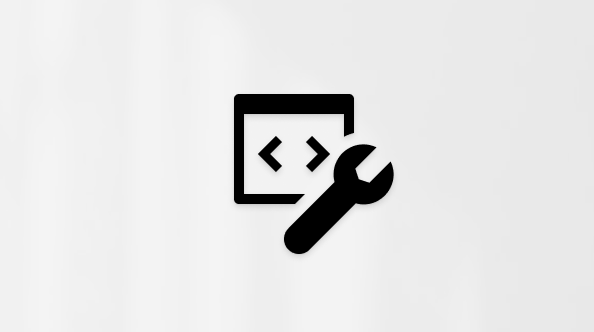Your calendar is integrated with Mail, People, and other features of Outlook on the web. Use Settings to change the default appearance and other settings for your calendar.
Important: This feature is only available in North America, Asia Pacific, Europe, Australia, UK, India, Japan, Korea, and Latin America.
Instructions for the new Outlook on the web
Note: If the instructions don't match what you see, you might be using an older version of Outlook on the web. Try the Instructions for classic Outlook on the web.
Go to Calendar settings
-
In Outlook on the web, select the Calendar icon.
-
At the top of the page, select Settings

-
If you want to change a different settings, use the search bar to quickly find what you need, or select View all Outlook settings.
Use Personalization settings to customize your calendar's appearance.
|
Setting |
Description |
|
Show the first day of the week as |
The day you select here will appear as the first day of the week in Week view. |
|
Show hours in |
Set the increments in which the calendar shows time. Use the option buttons to choose 15-minute increments or 30-minute increments. |
|
Show work week as |
Select the days to display when you choose the Work Week view in the calendar. |
|
Working hours |
Nonworking hours appear in a darker color than the rest of your calendar. When you're using the Scheduling Assistant, the work times of each attendee are considered in the suggested meeting times. |
|
Show week numbers |
Select this to show the number of the week when you view the calendar in Month view. |
|
Start the first week of the year on |
If you have Show week numbers in Month view turned on, you can choose where to start the numbering: the first day of the year, the first four-day week, or the first full week. |
|
Turn on the birthday calendar |
Select this to add a calendar that shows your contacts' birthdays. |
Use Events and invitations to control defaults when events are created and how meeting invitations, responses, and notifications are handled.
|
Setting |
Description |
|
Default reminder |
Use this setting to set how far in advance of an event you want the default reminder to appear. |
|
Delete invitations and responses that have been updated |
Select this check box to automatically remove out-of-date meeting requests and responses from your Inbox. The calendar item will remain on the calendar. |
|
Delete notifications about forwarded events |
Select this check box to automatically put event forward notifications in the Deleted Items folder. By default, you'll receive these notifications when an event you organized is forwarded to a new recipient by one of the event attendees. Selecting this option doesn't affect the processing of event request responses. |
|
End appointments and meetings early |
Select this check box to shorten events you schedule. Once selected, there are options to customize time to shorten the meeting. |
|
Add online meeting to all meetings |
Select this check box to make every meeting scheduled by you an online meeting. This setting honors your preferred online meeting provider which is Teams or Skype for Business. |
Use Weather to customize your weather experience. The ability to change a weather location is not yet available in the new Outlook on the web.
|
Setting |
Description |
|
Show weather |
Select either the Show weather or Hide weather option. |
|
Choose temperature scale |
Select either Fahrenheit or Celsius as the temperature scale to use. |
|
Choose a location to display |
Choose a location to display on your calendar. You can add up to five locations. |
Use the Events from email settings to control how events are added from email to your calendar.
|
Setting |
Description |
|
Automatically add events to my calendar from email |
Select this check box to automatically add events detected in email to your calendar. |
|
Mark events as private so only I can see them |
Select this check box to automatically mark events as private. |
|
Add these events to my calendar from email |
Select the check box for each event type that you want added from email to your calendar. |
Instructions for classic Outlook on the web
Go to Calendar settings
-
In Outlook on the web, select the Calendar icon.
-
At the top of the page, select Settings

Use Personalization settings to customize your calendar's appearance and choose to show or hide weather and local events.
Use the Calendar appearance settings to control how your calendar looks.
|
Setting |
Description |
|---|---|
|
Show work week as |
Select the days to display when you choose the Work Week view in the calendar. |
|
Set your working hours |
Nonworking hours appear in a darker color than the rest of your calendar. When you're using the Scheduling Assistant, the work times of each attendee are considered in the suggested meeting times. |
|
Show week numbers in Month view |
Select this to show the number of the week when you view the calendar in Month view. |
|
Start the first week of the year on the |
If you have Show week numbers in Month view turned on, you can choose where to start the numbering: the first day of the year, the first four-day week, or the first full week. |
|
Show the first day of the week as |
The day you select here will appear as the first day of the week in Week view. |
|
Default meeting length in minutes |
Set the default length of time for meetings from15-minute increments or create a custom length. |
|
Show hours in |
Set the increments in which the calendar shows time. Use the option buttons to choose 15-minute increments or 30-minute increments. |
|
Show calendar in |
Select Bright or Light colors for your calendars. |
Use the Weather and Local events settings to add information tailored to the locations you choose.
|
Setting |
Description |
|---|---|
|
Weather |
Select either the Show weather or Hide weather option. Select either the Fahrenheit or Celsius option for the temperature scale to use. Choose a location to display on your calendar. Select Add another location if you want to know about its weather, too. |
|
Local events |
Choose to show or hide local events on your calendar. Select either the Show local events or Hide local events option. Select Use current location or select Choose a city and enter the location. |
Use Automatic processing settings to control how events are added to your calendar and how meeting invitations, responses, and notifications are handled.
Use the Events from email settings to control how events are added from email to your calendar.
|
Setting |
Description |
|---|---|
|
Don't add events to my calendar from email |
Select this check box so that events detected in email aren't added to your calendar. |
|
Automatically add events to my calendar from email |
Select this check box to automatically add events detected in email to your calendar. |
|
Add these events to my calendar from email |
Select the check box for each event type that you want added from email to your calendar |
|
Mark events as private so only I can see them |
Select this check box to automatically mark events as private. |
|
Update time zone |
Select this option to change the time zone used by your calendar. |
Use the Invitations settings to control how meeting invitations, responses, and notifications are handled.
|
Setting |
Description |
|---|---|
|
Delete invitations and responses that have been updated |
Select this check box to automatically remove out-of-date meeting requests and responses from your Inbox. The calendar item will remain on the calendar. |
|
Delete notifications about forwarded events |
Select this check box to automatically put event forward notifications in the Deleted Items folder. By default, you'll receive these notifications when an event you organized is forwarded to a new recipient by one of the event attendees. Selecting this option doesn't affect the processing of event request responses. |
Use the Notifications settings to set reminders, send notifications to your phone, and receive an agenda of your calendar events.
Reminders settings control the default reminders for items on your calendar. By default, reminders are turned on and set for 15 minutes before an item is due.
|
Setting |
Description |
|---|---|
|
Show reminder alerts |
Select this check box to display a reminder for calendar items. |
|
Play a sound when a reminder is due |
Select this check box to play a sound when a reminder is due. |
|
Default reminder |
Use this setting to set how far in advance of an event you want the default reminder to appear. |
|
Get a daily email agenda for calendars and tasks |
Select this option to receive a daily email that lists your agenda for the day based on your calendar events and tasks that you've been assigned. Then, select the check box for each calendar that you want to include in your daily agenda. |
|
Don't send an agenda on days when I have no events or tasks |
Select this option to not receive a daily agenda email on days when you have no events or tasks due. |
|
Update time zone |
Select this link if you want to change the time zone used by your calendar. |
|
Update weather settings |
Select this link if you want to change the settings for weather information displayed in your calendar. |
Use the Text message notifications settings to send notifications about calendar events to your phone as text messages.
|
Setting |
Description |
|---|---|
|
Notifications about changes to events that occur within the following number of days |
Select this check box to get notifications sent to your phone about changes to events that occur within a number of days that you specify. Select the check box for Only during work hours to prevent notifications being sent at other times. |
|
Notifications for event reminders |
Select this check box to receive notifications of event reminders. Select the check box for Only during work hours to prevent notifications being sent at other times. |
|
Daily calendar agendas |
Select this check box and then specify the time to send your daily calendar agenda. |
|
Set up notifications |
Select this link to set up text messaging for your account if you haven't done so previously. (The text message notification options will be disabled until you set up text messaging.) |
Use the Agenda mail settings to choose whether to receive an agenda in email each day that shows your calendar events and tasks.
|
Setting |
Description |
|---|---|
|
Don't send me a daily agenda |
Select this option to not receive a daily email that lists your agenda. |
|
Send me a daily agenda |
Select this option to receive a daily email that lists your agenda for the day based on your calendar events and tasks that you've been assigned. Then, select the check box for each calendar that you want to include in your daily agenda. |
|
Update time zone |
Select this link if you want to change the time zone used by your calendar. |
|
Update weather settings |
Select this link if you want to change the settings for weather information displayed in your calendar. |
A Birthday calendar is automatically populated with the known birthdays of everyone in your contact list. You can also add birthdays at any time.
|
Setting |
Description |
|---|---|
|
Turn on the birthday calendar |
Adds a birthday calendar and auto-populates it with birthdays of your contacts. If you connect to your social networks in the People options, the birthdays for those contacts will also automatically appear in the calendar. |
|
Turn off the birthday calendar |
Hides the birthday calendar. |










